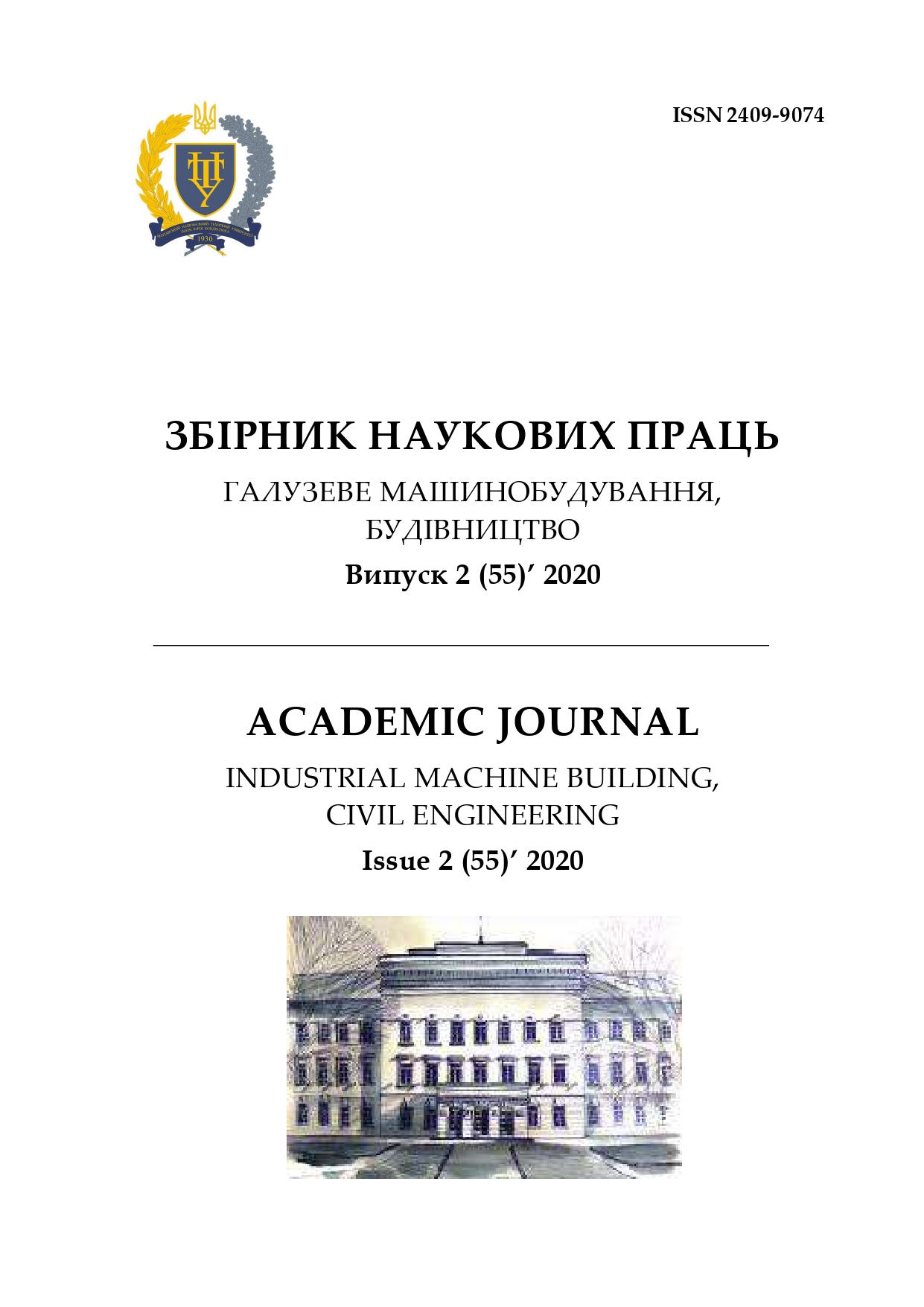Stress-strain state of space grid structure
DOI:
https://doi.org/10.26906/znp.2020.55.2339Keywords:
material capacity, optimization, space grid structure, stress-strain state regulation, tension regulatorAbstract
One of the factors influencing the stress-strain state of the structure is the placement method of the columns and their step. The problem formulated in the article is to determine the design solution of the space grid structure with the least weight. The paper examines how the columns location, the number of support points, and the supports step affect the force values in the space grid structure rods and the supports (columns). The first variant of the model adopted a space grid structure supported in the corners of four columns. The second variant of the model adopted a space grid structure supported on two sides – six columns on each side. In the third variant, the structure is supported by 20 columns along the perimeter. It has been determined that the third method of supporting location is the most efficient.
References
Vasil'kin A.A. & Denyakova V.V. (2018). Regulation of the stress-strain state of the structural roof slab. IVD, 2(49)
Retrieved from
Pahomov A.I., Kochetova E.A. & Kobezskij V.A. The main aspects of space grid structures in modern design. Materials of the VIII International Student Scientific Conference "Student Scientific Forum" Retrieved from
http://scienceforum.ru/2016/article/2016019012
Tolmachev I.N. (1981). Space grid structures of coatings of one-story industrial buildings. Moscow: MIIT
Hisamov R.I. (1981). Calculation and design of space grid coatings. Kyiv: Budіvel'nik
Lubo L.N. & Mironkov B.A. Slabs of regular spatial pattern. Leningrad: Strojizdat
Kolodezhnov S.N. & Selivanova A.N. (2017). Analysis of suspended structural slab canopy reinforcement systems. Structural mechanics and structures, 14, 61-71
Vasil'kin A.A. & Shcherbina S.V. (2015). Automated solution of the determining optimal height of a steel truss problem by the criterion of minimum mass with varying truss height. Integration, partnership and innovation in building science and education (12-13.12.2014). Moscow: MGSU, 131-134
Nikityuk A.V., Moskovkina A.A. & Zueva I.I. (2011). Advantages and disadvantages of space gridstructures. PNRPU Bulletin. Construction and architecture, 1 Retrieved from https://cyberleninka.ru
Hisamov R.I., Agafonkin V.S. & Zamaliev F.S. (1973). Tutorial for the truss roofing structural calculation and design. Kazan': Tatpoligraf
Trofimov V.I. & Begun G.B. (1972). Space grid structures. Moscow: Strojizdat
Huybrechts S. & Tsai S.W. (1996). Analysis and behavior of grid structures. Composites Science and Technology, 56(9), 1001-1015
https://doi.org/10.1016/0266-3538(96)00063-2 DOI: https://doi.org/10.1016/0266-3538(96)00063-2
Chilton J. (1999). Space Grid Structures. Routledge
https://doi.org/10.4324/9780080498188 DOI: https://doi.org/10.4324/9780080498188
Mikhaylov V., Sergeev M.S. (2011). Space grid structures for roofs. Vladimir: VlGU
Parlashkevich V.S., Vasil'kin A.A. & Bulatov O.E. Design and calculation of metal structures of working sites. Moscow: MGSU
Trushchev A.G. (1983). Spatial metal structures. Moskva: Strojizdat
DBN V.2.6-198:2014 (2014). Steel structures. Design standards. Kyiv: Minregionbud
DSTU B V.1.2-3:2006 (2006). Deflections and displacements. Requirements to designing. Kyiv: Minregionbud
Ashtul S.A. & Patil S.N. (2020). Review on Study of Space Frame Structure System. International Research Journal of Engineering and Technology, 7(4)
Space Frame Structure; an analysis of its benefit by Constro Facilitator. Retrieved from
https://www.constrofacilitator.com/space-frame-structure-an-analysis-of-its-benefit
Murtha-Smith E. & Bean J.E. (1989). Double Layer Grid Space Frame Buckling. International Journal of Space Structures, 4(3),117-127
https://doi.org/10.1177/026635118900400301 DOI: https://doi.org/10.1177/026635118900400301
Britannica, The Editors of Encyclopaedia. "Space frame". Encyclopedia Britannica, Retrieved from
https://www.britannica.com/technology/space-frame
Li Z.X. (2013). Structure Mechanics Analysis with Different Construction Schemes in Large-Span Space Grid Structure. Advanced Materials Research, 788, 534–537 DOI: https://doi.org/10.4028/www.scientific.net/AMR.788.534
https://doi.org/10.4028/www.scientific.net/AMR.788.534
Zhou Z., Wu J., Meng Sp. et al. (2012). Construction process analysis for a single-layer folded space grid structure in considering time-dependent effect. International Journal Steel Structures, 12, 205-217 DOI: https://doi.org/10.1007/s13296-012-2005-y
https://doi.org/10.1007/s13296-012-2005-y DOI: https://doi.org/10.1088/1475-7516/2005/10/012
Fu F., Parke G.A.R. (2018).Assessment of the Progressive Collapse Resistance of Double-Layer Grid Space Structures Using Implicit and Explicit Methods. International Journal Steel Structures, 18, 831-842
https://doi.org/10.1007/s13296-018-0030-1 DOI: https://doi.org/10.1007/s13296-018-0030-1
Downloads
Published
How to Cite
Issue
Section
Published 2020-12-30




